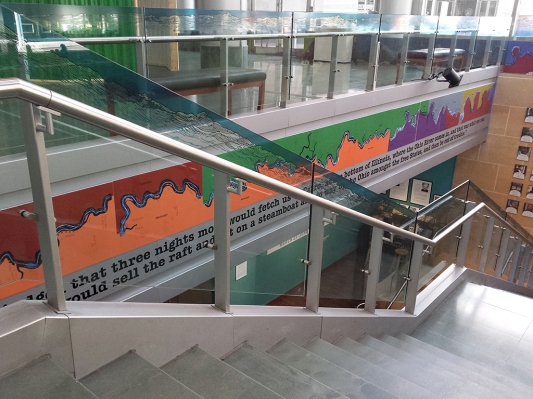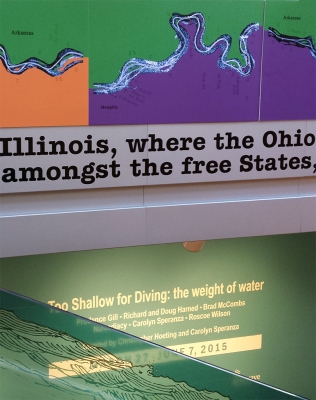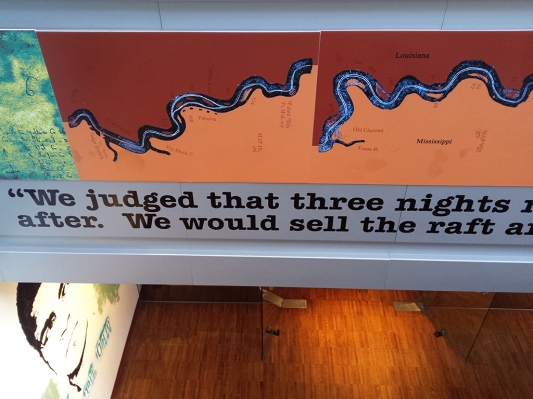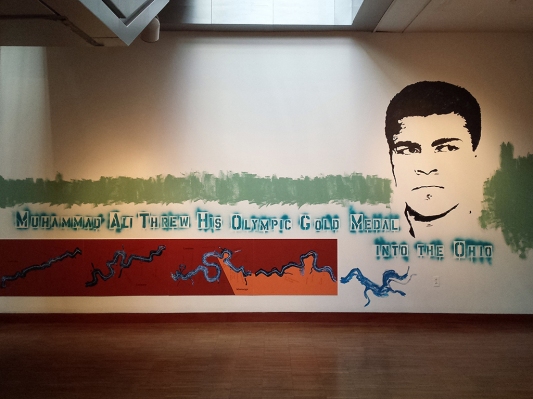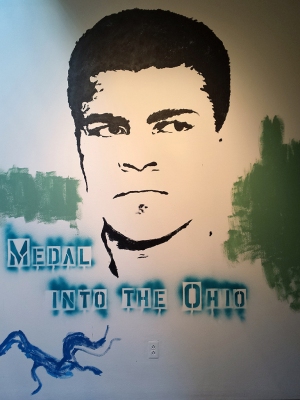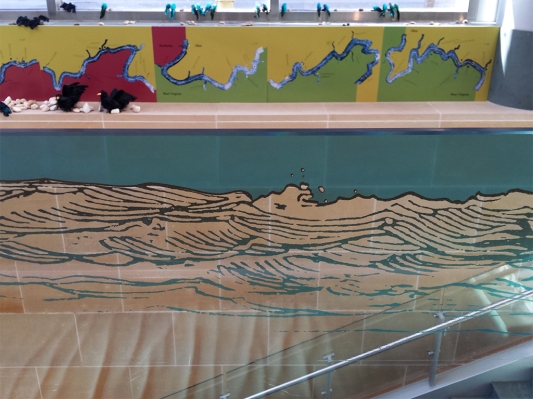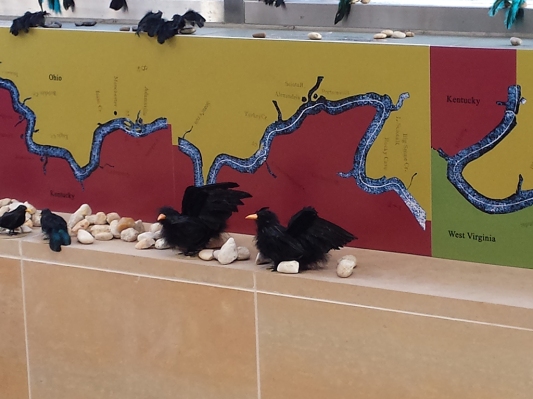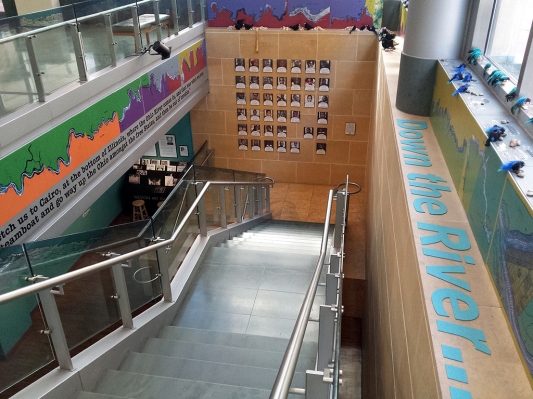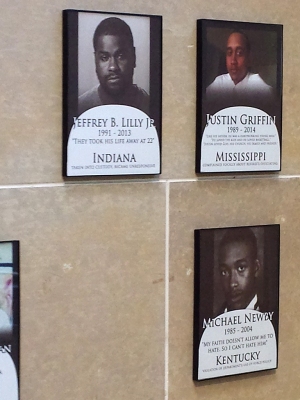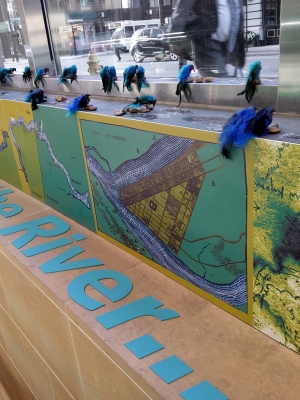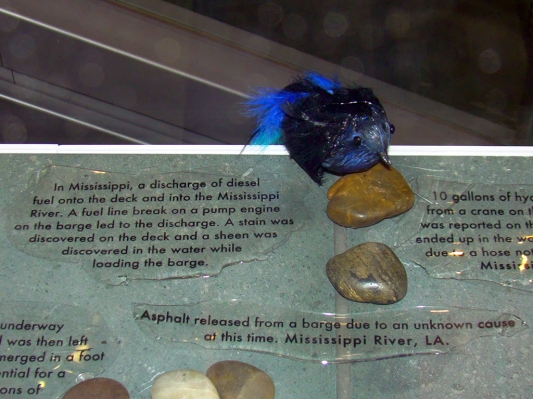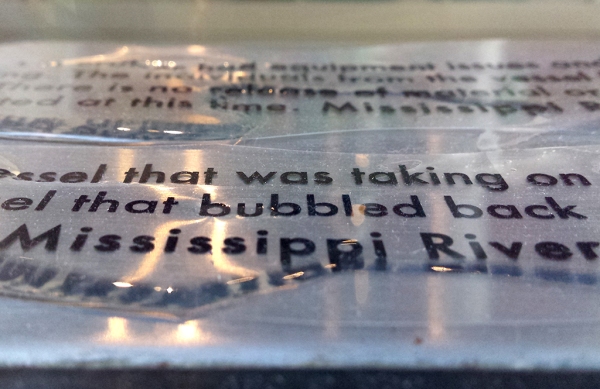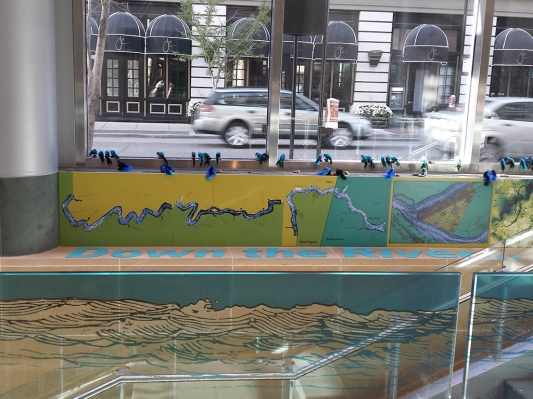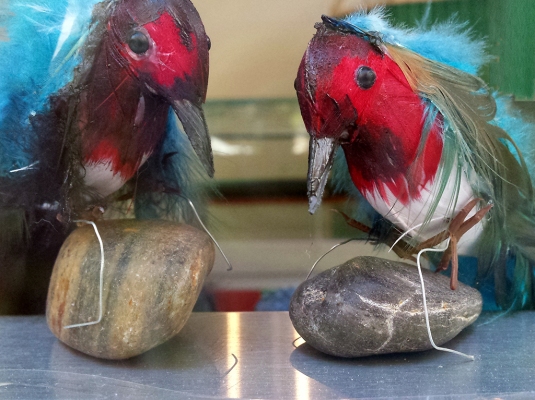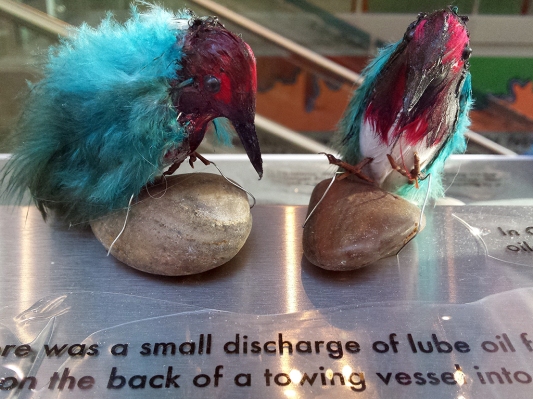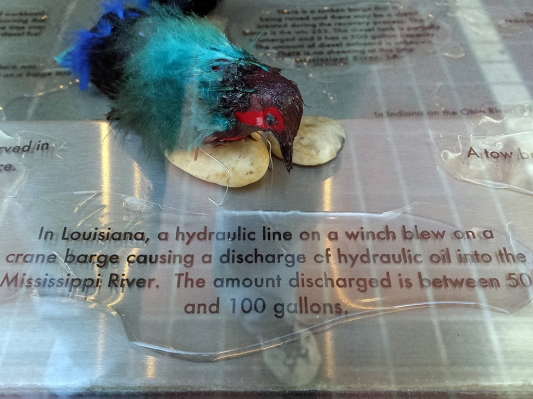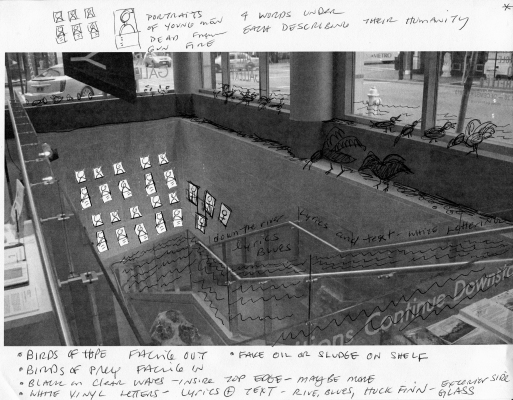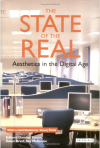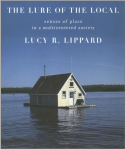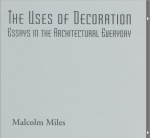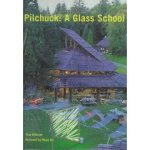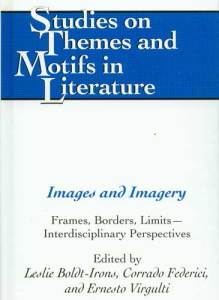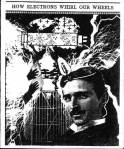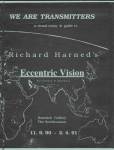The quote on the left demarcates the point in Huck Finn’s river journey with his friend, the slave Jim, where Huck is just beginning to see their way clear of the slave states. Here you can also see the repeating waves, printed on glass-cling, wrapping its way from the top to the bottom of the gallery’s staircase.
26
“We judged that three nights more would fetch us to Cairo, at the bottom of Illinois, where the Ohio River comes in, and that was what we was after . . . “
27
” . . . We would sell the raft and get on a steamboat and go way up the Ohio amongst the free States, and then be out of trouble.”
28
As a gold medal winning Olympic champion, Muhammad Ali returned from Europe to Louisville Kentucky in 1960 to find Jim Crow alive and well. In one of his new jobs, Ali had to enter through the back door. No one knows if the story is folk-lore or fact, about Ali throwing his gold medal into the Ohio River after being refused service at a drugstore counter and run out of the shop by a gang of white motorcyclists.
Coming to the end of the journey, you would have heard Ali’s voice, as I did many times as a child. He was a hero of my father’s– for his stand and integrity in objecting to serve in the Vietnam War.
30
____________
Down the River ~ 7
July 15, 2015 — Carolyn P. SperanzaDown the River ~ 6
July 14, 2015 — Carolyn P. SperanzaAs we move further down the rivers, the birds get bigger, darker, and more sinister. Again, this is a detail from the transparent, glass-cling printed wave element in the front.
19
Not only are the Ohio and Mississippi Rivers some of the dirtiest in our country, environmentally speaking – they hold our history of human trafficking. The crows make their appearance when we reach the point in the river where it divided the country in terms of slavery. In Kentucky, you were a slave. Cross the Ohio River and you were a freed person.
20
The mossy looking panels are from pencil drawings made in the 1818 original Navigator that I had scanned for the river maps. Weather these drawings were made in 1818 or not I don’t know. They are hard to see here but are clearly of the rivers and river-fronts.
21
In addition to being the messengers of darkness, specifically of slavery and racially-based death by cop, the crows had a job to do: find Muhammad Ali’s medal.
22
As you walked down the stairs, the central part of the journey is laid out in map panels to your left, with text clipped from Huckleberry Finn. Directly in front of you was a group of memorial portraits.
23
Each of these young black men and boys had died in the hands of the police, in the states along the Ohio and Mississippi Rivers.
24
Some of them were stand-up like Johnny Gammage, others were living on the rougher side of life, but absolutely none of them had done anything that warranted being shot and killed by the police. The entire gallery, both floors, could have been filled with this type of memorial portrait- there are enough deaths just like these to warrant it.
25
Down the River ~ 4
July 12, 2015 — Carolyn P. SperanzaHere’s where you can see a closeup of the glass cling that the gallery’s sign guy installed for me. I had taken a tiny-teeny piece of ocean wave clip art and turned it into a repeating tile. We used it on the gallery window and the upper outside edge of glass, wrapping its way around all the way down the stairs to the second set of galleries and to the conclusion of the journey in New Orleans. I loved the way the this graphic interacted with the gallery’s already existing white lettering signage on their windows and interior glass.
12
There were about a hundred of these little birds, perched on river stones. Even though they started life in a factory in China and then made their way to my studio factory, they each had their own distinct personalities.
13
In addition to the oil-slick sickness I gave the birds fluorescent blue feathers. My idea was that with enough toxicity, wildlife will surely mutate into a creature that we may not recognize as a bird in the traditional sense.
14
This text came directly from a report made by an average citizen to the U.S. Coast Guard. Amazingly, you can find them all, thousands of reports, in spreadsheets on a federal web site. The text was printed on transparencies, cut up in wavy curvy shapes and then coated in an epoxy, creating the appearance of a puddle.
15
Down the River: Muhammad Ali threw his Olympic Gold Medal into the Ohio
January 14, 2015 — Carolyn P. SperanzaFor several years now I have been angry with myself and with my fellow humans. We don’t have what it takes to address the critical issues we face with each other and with the species with whom we share a planet.
Charles Perrow is a Research Scholar and Emeritus Professor of Sociology at Yale and a Visiting Professor at Stanford. At his May 2012 presentation at Carnegie Mellon, I asked him point blank, “Of all the animals on the Earth, why are we the only ones who jeopardize the survival of every living creature?” He responded to me, “The human brain is wired for short-term survival. Our only hope lies with a long-term institutional mission, and it’s capacity to expand our vision, one that encompasses how we humans impact the quality of our air and water.”
The U.S. Coast Guard has a reporting system for chemical, solid waste, and oil spills called the National Response Center—a 911-call center for our waterways. Looking at the Center’s reports, there are enough incidents in a year to fill any map, and these are just the ones that get reported. Even with the Clean Water Act in place since 1972, we continue to dirty our water. If we look back another hundred years or so, our waterways, and in particular, the Ohio and Mississippi rivers, were sullied by pollution of another kind: human trafficking. To this day, “sold down the river,” implies forcible separation from family, certain hardship, and even death. Water is indeed a vehicle for slavery while the converse, “up the river,” translates into being shipped off to prison.
On my first visit to the Weston Gallery I saw the public library’s “Cincinnati Panorama of 1848.” An interactive map provides a guide to the edge-to-edge illuminated photographs of the Ohio riverfront. Pressing a button reminded me that in 1848, the river separated not just geographic states, but the states of being a slave and of a free man. Having read “The Adventures of Huckleberry Finn” aloud with my family as a kid, I stood there thinking of Huck saying, “We would sell the raft and get on a steamboat and go way up the Ohio amongst the free States, and then be out of trouble.”
During my childhood, Mohammed Ali was the subject of many impassioned conversations in my suburban New Jersey home, as my father greatly admired his integrity and the guts it took for him to object to being drafted into the Vietnam War. Furthermore, one of Ali’s urban legends caught my attention. Shortly after returning home to Louisville, Kentucky with a 1960 Olympic Gold Medal, despite parades and fanfare, Ali was refused service at a local drugstore counter. A white motorcycle gang chased him and a friend out of the store and onto the road. The story concludes with Ali throwing his beloved medal into the Ohio River in disgust. It just so happens that 1960 was also the year my parents married. My Italian father from Brooklyn barely “passed” for white with his father-in-law who was from Georgia. Nothing about race was clear, except that Ali and Huck Finn’s voices started to shape my worldview. That was very clear.
Today I study databases and the news as much, if not more, than paintings in museums. A glance at Google Maps tells me that Ferguson, MO is not far from the Mississippi. I have the tools to map out toxic dumping on riverfronts—and to illustrate how the senseless deaths of young black men geographically and historically connect with the United State’s slave trade.
This is not a graceful narrative; it’s a combination of things, 1-2-3, which are happening in my world at this time. This is my America.
